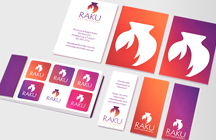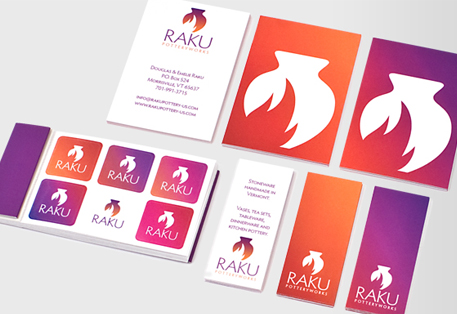Make your logo great
« Browse all tipsHaving a strong brand identity is crucial to any business – and an eye-catching and unforgettable logo is an integral part of the brand. We asked Rob from Logoworks to explain the power of a really effective logo.
Hi Rob. Welcome to MOO! Why do you think every business needs a logo?
It's critical for a new venture to quickly establish a memorable identity for itself—with good service and a good product. A new business needs to stand out from all of its competitors and anyone else that does something similar. But once you do that, you need to help your customers remember you.
A good logo acts as a visual reminder for your customer about the experience they had buying from you in the past. A unique icon or type treatment can help a customer easily identify your business as the one they had a good experience with.
What value does a logo add to a business?
That's a tough question to answer, at least quantitatively. What value do you place on a customer's ability to remember you and to come back for more? What is it worth to a business to appear professional? What's the value of an identity that employees, customers, and other stakeholders easily recognise and like (or even love)?
These things can be worth millions to a business owner. So it's no wonder that big businesses often spend enormous budgets on their logo identities. And just about every big business started as a small business, so it makes sense to pay attention to your logo early on—even if you don't have a big budget to spend.
Can business owners see an immediate difference in how others view their brand with a logo?
The short answer is yes.
A logo makes a business appear more professional, and sometimes bigger than they may actually be. So a business that uses its logo effectively may do business with larger partners or more customers than a business with a poor logo or no logo at all.
There are a lot of elements that go into developing a great brand, and the logo is only one of them, but it certainly helps to have a strong, recognisable mark for your business.
What are some of the most successful logos in the world—and why are they so memorable?
Three key factors: simplicity, consistency, and the use of only two colours.
Think of a few large companies that you are familiar with and they generally have a good logo. You don't even have to like the company or its products, so much as just recognise what they are doing – people like Coca-Cola, McDonald's, Virgin, BP, Nike, or Nestle.
They use no more than two colors (and still look good in black and white only). And they are used consistently the same way everywhere you see them. Some of these logos haven't changed in decades.
You'll never see the Coke logo in blue. You'll never see the Nike logo on an advertisement that promotes laziness. You'll never see the McDonald's logo on a high-end eatery. Why? Because by using their marks consistently over time, these companies have made their logos easy to recognise and associate the logo with the products they represent.
What makes a great logo?
- Have a design that looks good in black and white and use no more than two colours (there are exceptions, but they're few and far between).
- Keep it simple – the more complex the design, the longer it takes to recognise and remember.
- Be consistent on all forms of marketing and advertising – it should always look exactly the same.
What makes a bad, unsuccessful logo?
Simply do the reverse of the three things that make a great logo and you'll get a lousy one. Logos that try to do too much, or are cluttered with complex icons, too many colors, even a long business name and legal terms, usually don't turn out too well. The same can be said for a logo that is used inconsistently—blue and green on your delivery vans, red and black on your website, and purple and yellow on your Business Cards. It just ends up confusing your customers.
What are a few tips you recommend to customers who don't know what they want?
You can prepare for the logo design process in three stages:
1. Think about your business. Ask yourself:
- What are you trying to accomplish?
- What message do you want to communicate with your customers?
- What stories will your customers tell about you?
- Are there any images that come to mind when you think about this?
- What are some logos that appeal to you?
- What kinds of images will appeal to your customers (they may not be the same as images that appeal to you)?
2. Think about your competition. Ask yourself:
- What are the messages they use?
- How is your message different?
- What colors do they use?
- What can you do or say to stand out from them?
3. Think about where you'll use your logo. Ask yourself:
- Does your business use uniforms, business cards, or have retail outlets?
- Will you be doing business online?
Once you have some answers, you're ready to start the logo design process.
Are there any bad ideas when it comes to logos or can you work with anything?
There are definitely bad ideas when it comes to logo, but it all depends on the situation. You probably wouldn't want to use risqué or suggestive icons for a day care center or nursery school, but that same image may be entirely appropriate for a gentlemen's club or a men's magazine. Conversely, you wouldn't want to use a crayon or children's script font for a stockbroker, but these images would be entirely appropriate for an after-school program. The important thing is to think about what's appropriate for your customers and how they would respond to the images you use in your logo.
New to MOO?
MOO makes life a little less virtual. We help our customers print things like business cards, postcards, flyers and stickers, making it easy for them to share information about themselves or their business in the real world.
Print is simple and wonderful. We love it.
View Our Products




